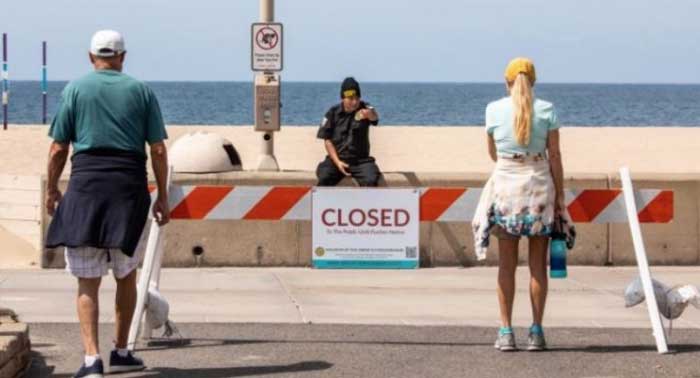
Kim Prather, a leading atmospheric chemist at the Scripps Institution of Oceanography, wants to yell out her window at every surfer, runner, and biker she spots along the San Diego coast.
“I wouldn’t go in the water if you paid me $1 million right now,” she said.
The beach, in her estimation, is one of the most dangerous places to be these days, as the novel coronavirus marches silently across California.
Many beachgoers know they can suffer skin rashes, stomach illness and serious ear and respiratory infections if they go into the water within three days of a heavy rain, because of bacteria and pathogens washing off roads and into the ocean. Raw or poorly treated sewage entering the ocean also poses major health risks.
Prather fears that SARS-CoV-2, the virus that causes COVID-19, could enter coastal waters in similar ways and transfer back into the air along the coast.
In her research, Prather has found that the ocean churns up all kinds of particulate and microscopic pathogens, and every time the ocean sneezes with a big wave or two, it sprays these particles into the air. She believes that this new coronavirus is light enough to float through the air much farther than we think. The six-feet physical distancing rule, she said, doesn’t apply at the beach, where coastal winds can get quite strong and send viral particles soaring.
“It’s not going to kill you if you miss a few surfing sessions, but it could if you go out there and get in the wrong air,” she said.
“You can’t see the virus, you can’t smell it … It’s a real silent killer right now.”
Scientists across the globe are scrambling to learn the basic characteristics of the virus, and so far, neither the World Health Organization, the U.S. Centers for Disease Control and Prevention nor local health agencies have warned that the virus can be spread by ocean spray or coastal breezes. However, they have warned that it can be spread by droplets from sneezes and coughs, and by coming into contact with it on surfaces.






